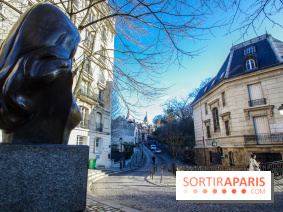Paris has much to fascinate. In addition to its beautiful heritage, the capital also has a mystical side fed by popular beliefs that sometimes still exist today. Whether we believe in them or not, they bring to the capital a more mysterious side that contributes to enrich its history. So, what are the popular beliefs and urban legends that mark the City of Light?
A tomb that grants wishes
The most flowered tomb of the Père Lachaise cemetery is not a commonplace one. It is a strange dolmen located in the 44th division under which one can discover a bust, that of Allan Kardec. Known as the founder of spiritualism and the author of the book of spirits, he has been the subject of a widespread legend since his death.
It is said that before his death, Allan Kardec would have revealed a strange instruction: to put his hand on the neck of the bust that overhangs his tomb, to make a wish and to come back with flowers if it is granted. Even today, this tomb remains much more flowered than those surrounding it, which maintains this belief to such an extent that a denial is now posted on the back of the stone to dissuade visitors from trying the experiment in turn.
A fountain to remain faithful
It is a sort of legend within a legend. There would exist in Paris, on the side of Montmartre, an unusual fountain which would have the power to ensure the fidelity of its companion. This one is in the square Suzanne Buisson and represents a man carrying his head in his hands. This is Saint-Denis, the first bishop of Paris.
According to the legend he would have walked 6 kilometers after his execution carrying his own head before entrusting it to a woman and collapsing where the Basilica of Saint-Denisis today. It is also said that the bishop stopped at Montmartre to wash his face in this fountain. If the representation of Saint-Denis dates from the early 1940s, the source of this fountain would go back much further. It gave birth to an unusual saying: " A young girl who has drunk from the Saint Denis Fountain, remains faithful to her husband ".
A recumbent that grants fertility
Back to Père Lachaise. This time we head for the 92 division, in search of the tomb of Victor Noir. His name may not mean anything to you and yet he is at the heart of a popular belief that remains tenacious to this day. His tomb is easily recognizable: it represents the young journalist, 21 years old at the time of his death, shot by Prince Pierre-Napoléon Bonaparte in 1870.
Now look closely at the recumbent. You will notice that the bronze has been rubbed in places that owe nothing to chance: his lips, the tips of his shoes and ... his crotch. The sculptor Jules Dalou, at the origin of this statue, represented Victor Noir with a virility that seems protuberant. Since the 60's a legend has spread according to which by touching certain parts or even by straddling this tomb, women having difficulties to get pregnant would become more fertile. The traces of rubbing on the recumbent show how much hope this belief has raised.
An evil rock
In Montmartre, among the many unusual places in this picturesque neighborhood is a mysterious rock. It is nicknamed the rock of the witch. This strange rock has been the fruit of many legends that generally associate it with a witch who would have lived there nearby. Some of them accuse it of being cursed, others lend it more beneficial virtues. The idea that this rock is actually a meteorite has even spread in the capital.
In reality it would be a disused fountain. As for its possible powers, it will be very difficult for you to put this rock to the test: the passage of the witch which shelters it is now privatized. The easiest way to discover it would be to go through theprivate mansion of Montmartre. But be careful: if you are allowed access to this passage, be sure to be discreet so as not to disturb the peace of the neighborhood.
A mysterious will
The Père Lachaise cemetery is definitely the scene of many popular beliefs. The appointment is given this time in the 19th division. Your attention is drawn to an imposing mausoleum surrounded by four columns that overlooks the cemetery. This is the final resting place of Elizaveta Alexandrovna Stroganova, also known as Countess Demidoff.
Legend has it that in her will, Countess Demidoff stated that she would bequeath her fortune to the person who would watch over her in her mausoleum for 365 days and 366 nights. The reward would be 2 million rubles. This was all it took for applications to be sent to the Père Lachaise cemetery.















